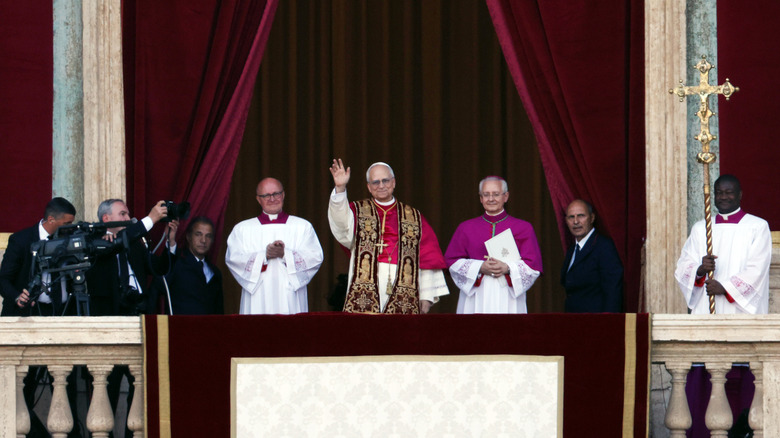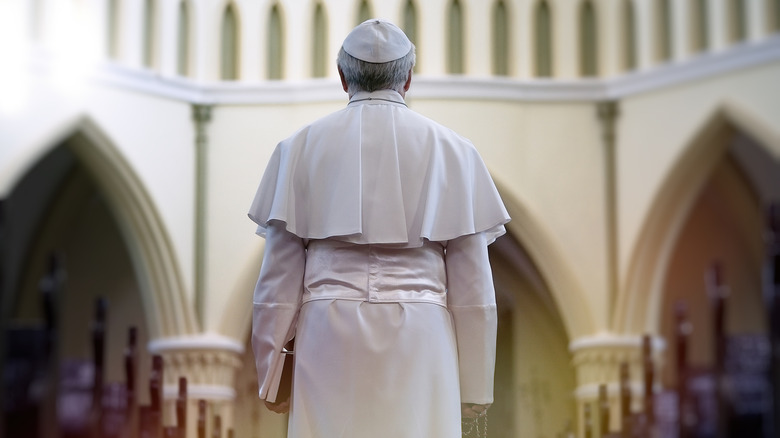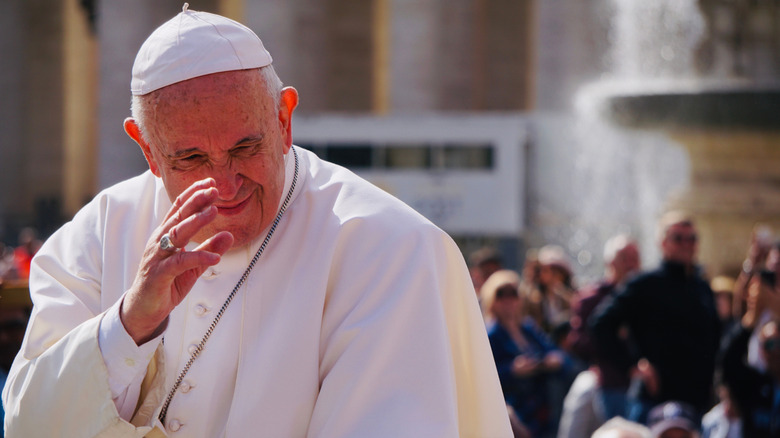The Meaning Behind Pope Robert Prevost's Chosen Name, Leo
For the first time in history, there's an American pope in Rome. The new pontiff is 69-year-old Cardinal Robert Prevost, an American missionary who spent years ministering in Peru. On May 8, 2025, he was met with a roaring crowd in St. Peter's Square after being elected the first American pope in the 2,000-year long history of the Catholic Church.
The announcement came on the second day of the conclave with 133 cardinals sequestered inside the Sistine Chapel determining the elected leader. A white plume of smoke streaming from the chimney of the hallowed chapel, followed by a triumphant tolling of bells, signaled the news of Rome's new pope. After the official announcement, "Habemus Papam" — which translates to "We have a pope" — was declared from the balcony of St. Peter's Basilica, Rome's new pontiff took the stand with his inaugural words, "Peace be with all of you."
In Roman Catholic tradition, the new pope adopted a papal name, and announced himself as Leo XIV. Though the name Leo dates back centuries in the history of the Catholic Church — and has been used by 13 previous popes — it's been over 100 years since a pope chose the name. So, why did he choose it?
What's in a name, anyway?
When choosing a name, the pope doesn't just pick something that has a nice ring to it. Instead, the name he chooses has symbolic significance, reflecting his values and the legacy he wishes to lead for the Catholic Church. As quoted in The Independent, Catholic priest Ed Tomlinson reflected, "[The name] seems likely to be a continuation of French liberalization. The papal name Leo unsurprisingly shows a Pope who is going to be strong during a time of crisis, historically."
It's also common practice for new popes to choose a papal name that pays homage to past pontiffs they wish to emulate. As U.S. priest Rev. Thomas Reese told The Washington Post, "By picking the name Leo XIV, he shows he is committed to the social teaching of the church, which was made foundational by his predecessor Leo XIII."
Serving as pope for the Roman Catholic Church from 1878 to 1903, Leo XIII was known for bringing "a new spirit to the papacy" (per Britannica) by embracing scientific processes, and addressing social and economic issues with his encyclical known as "Rerum Novarum" — or "On the Condition of the Working Classes."
The history of popes choosing their own name
The practice of popes choosing their own name hasn't always existed. With the exception of Roman Mercurius – named after the Roman god associated with travel and communication, Mercury – who changed his name to John II during his rule in the 6th century, popes used their given names for centuries. While popes began changing from their given names in the 16th century, it wasn't until the mid-20th century that popes began selecting names to directly align with their papacy.
Some of the most commonly-chosen names include John, Gregory, and Benedict. The name Leo has now been chosen a total of 14 times. While history often repeats itself when it comes to papal names, Pope Francis, who died April 21, 2025, was the first since Pope Lando in 913 to select a previously unused papal name, channeling the legacy of St. Francis of Assisi by advocating for peace and inclusivity of the LGBTQ+ community during his papacy.
If history is any indicator of the power that the name Leo holds, then it is a strong choice, especially when we look at what other religious leaders have to say. Reflecting on the legacy of Leo XIII, Father Vito Crincoli told ABC News, "He loved his people. His people, he considered man, not a machine. A man's work was a reflection of his dignity. We don't know this yet, but it'd be really interesting to know why [Pope Leo XIV] took the name."


